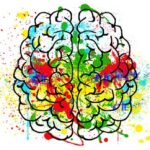Growth Mindset, a term coined by Carol Dweck, addresses the beliefs and resulting actions that people have about learning. People with a growth mindset believe that their abilities, intelligence levels, and skills will improve over time and as a result of effort. They believe they can learn.
Much of what is written about growth mindset and the strategies to develop it focuses on pedagogy. While establishing a growth mindset culture in the classroom is primarily dependent on the teacher’s behavior, expectations, and instruction, the design and contents of the instructional materials can also support or hinder the development of a growth mindset.
In classrooms where a growth mindset culture is evident, students are learning how to learn, and they are learning to use multiple strategies to overcome learning challenges. Based on our review of thousands of instructional materials, we have observed five key elements in materials that support a growth mindset. Many of these elements are also those that support differentiation and the development of critical and creative thinking.
Flexibility in Instructional Content and Design Supports a Growth Mindset
The ability of the teacher and student to make instructional choices based on learning needs, learning styles, and interests helps to foster a growth mindset. Materials that support a growth mindset vary in design, lesson style, and options for students and teachers. These materials provide and encourage multiple strategies for learning new material. In other words, content is presented in more than one format and variance in activities supports multiple learning styles and enables students to make numerous attempts, in different ways, to learn the content. A key feature of materials that support a growth mindset is whether or not the material empowers students to make choices about their learning.
Support for Differentiated Instruction Fosters a Growth Mindset
Materials that support a growth mindset offer an appropriate level of challenge for all students. They provide resources and suggestions for differentiating instruction to support multiple student learning needs. All students have the opportunity to work outside their comfort zone, experience productive struggle, fail early, and learn from their mistakes. Lessons are designed to reflect the value of persistence toward developing skills and talents. “Extension” activities are not reserved for those students who are gifted or finish early.
Open-Ended Activities and Assignments Support a Growth Mindset
Materials that support a growth mindset encourage students to think critically, justify their answers, process their thinking, and solve problems. These materials frequently offer activities, questions, and assignments that are open to multiple correct answers and interpretations. Examples include explorations, project-based learning, student-designed experiments, and self-selected reading and writing.
Role Models, Productive Struggle, and Teamwork Support a Growth Mindset
Materials that support a growth mindset include opportunities for students to learn from others and from their own mistakes. This might include content about role models in the field who solved challenging problems, overcame difficulties to succeed, or learned from their mistakes. These materials help students learn that you don’t have to get it right the first time in order to succeed. The highest-quality materials also provide consistent opportunities for students to collaborate and learn from each other, supporting the idea that everyone has areas of strength and areas for growth, and everyone can use their strengths to learn.
Reflection and Student Self-Monitoring Support a Growth Mindset
Materials that support a growth mindset enable students to take charge of their own learning. They provide consistent opportunities and instructional suggestions that require students to focus on reflection, learning experiences, opinions, and attitudes about learning, or the process of learning. For example, lessons may conclude with questions about how students learned what they learned, and what they would do differently next time. Materials also allow students to track their own progress by providing reports that show growth and progress (rather than just grades) and allow students to set their own learning goals.
